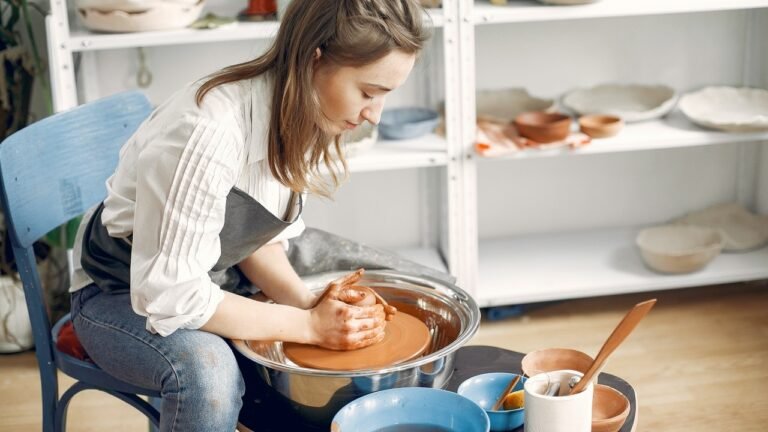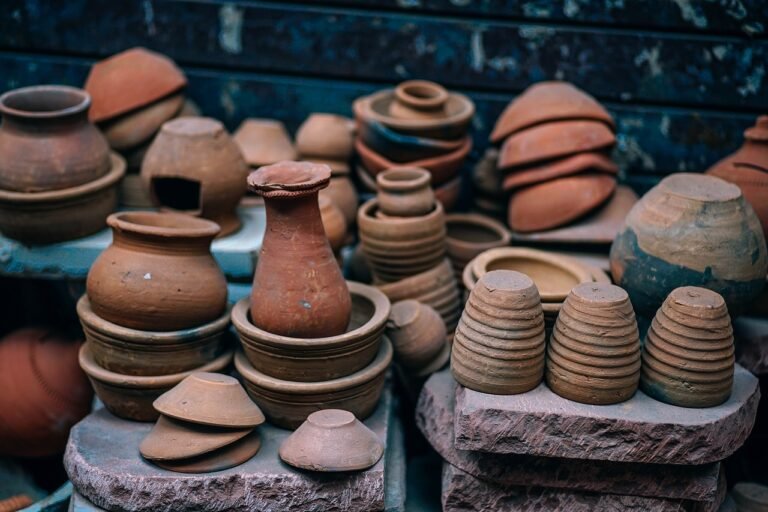What Are the Advantages of Using a Clay Pot in Cooking? Beginners Guide
Clay is the primary layer on Earth, and because of its wide application, it is heavily utilized by humans. Different civilizations used clay throughout history for shaping and human purposes.
From figurines, amphoras for wine, and eating utensils, people shaped the clay with water, because of its elasticity and durability, making the dishes for food preparation. But what are the advantages and disadvantages of using a clay pot in cooking?
Utilizing clay in cooking has many advantageous properties, showing how clay has been used for hundreds of years by human society: baking or drying the clay, making pots that require less oil to cook, making food that has a better taste, and making moister and tasty food.
I prepare a large piece of meat for Sunday lunch without cutting it into smaller pieces so it won’t dry out. In the meantime, I usually add the vegetables to the same pot as the meat. This allows the vegetables to cook and bake in juices and oil. The meal is easy to prepare once you season it and put the cover on, and then put it in the oven – after that, you don’t have to worry about it, nor do you have to flip the meat over, since the heat circulates evenly in the clay pot. A
sensational aroma comes from the meat and seasoning when the lunch is over, followed by the sweet flavors derived from the meat and vegetables.
What Are the Benefits of Cooking in Clay Pots?
Whenever you prepare food, you should consider several things: how healthy and nutritious is the meal, how much energy does it provide, and how tasty will it be? Nowadays, people less often prepare food but pay more attention to the health and quality of groceries used to feed their healthy dieting family members. Clay is a great choice for food preparation because it has some of the following advantages:
Oil and seasoning are reduced
Clay pots keep all the quality and ingredients in groceries because their elasticity and long lifespan reduce the need for oil. If you prepare your food in clay pots, you don’t need much oil.
You can prepare food in these dishes and keep all its vitamins and minerals intact.
Also, if you put a rosemary leaf on the fish that you cook in a clay pot, that aroma will get in the structure of the meat and follow you all the way, while you enjoy your lunch. If you, on the other hand, bake a pie in these pots, you will get a tender texture and evenly baked meal, which will disintegrate in your mouth.
Detox
The alkaline nature of clay helps to neutralize the PH acidity of nutrients. As a result, your food is more tender and delicious since you use the freshest ingredients. A clay pot allows you to obtain all the benefits of the dish you need to gain strength and energy.
Slow cooking
With its porosity, clay provides moisture and air circulation to the pot, so food can be cooked slowly and evenly in clay pots using heat treatment. Fast food restaurants and express restaurants are often the dominant means of food preparation, which means cooking in clay pots can be a real treat and a way to experience hedonistic pleasure through food.
We care about the environment
In the process of preparing meals, clay is by far the most natural material you can choose. It is long-lasting and fully degradable, so it is a great way to prepare tasty meals for your family and to protect the environment at the same time.
Is Cooking in Clay Pots Safe?

I must share a few details about the maintenance of clay pots since we are discussing their security. Due to their fragility, clay pots must be handled with great care. Clay can easily break, so even if a pot breaks, it can lose functionality, and this prevents you from getting the full effects of food preparation if it is pierced and/or damaged.
As we are talking about eco-friendly pots and non-toxic dishes that contribute to the preservation of the environment, we cherish the maximum nutritive abundance you can expect from food prepared in this kind of vessel. It is completely safe to use, compatible with all kitchen appliances, and suitable for preparing any kind of grocery.
Clay pots need a “seasoning” from time to time in order to use them for a long time, which you can achieve by submerging them in water, followed by drying them in the Sun. Clay pots can also be oiled and stored in a room with enough air circulation.
There is no need to wash clay pots with detergent since they absorb liquids easily! You can leak detergent into the next meal if the detergent is absorbed in the vessel. The best way to clean clay pots is to scrub them gently, eventually using baking soda if the stains persist.
Taking care of your clay pots properly can prevent fungus and mold from growing inside. Store it properly, completely dry, and in an area with good ventilation.
Which Clay is Best for Cooking?
Depending on the kind of dish you want to prepare, you can choose the best clay pot. Throughout history, different circumstances led to the beginning of using clay and beginning food preparation. First data shows clay as the raw material that was used to make vessels and pots in Japan, around 16500 years ago.
After that, the usage of the clay is connected to a sedentary way of life, without nomadic migration. It coincides also with starting an agricultural lifestyle and baking bread. First pots are used in open ovens since the temperature of the fire was a bit lower, dishes were made for a longer time.
For every pot, it is crucial that it is not glazed and that it is adequately covered. In this way, the heat and moisture of the food are there while cooking the meal, and because of that, groceries
are softer and prepared evenly. As the preparation of the meals gained new techniques and shapes, new groceries were introduced. From this, we can discuss different kinds of clay, which can be great for food preparation:

Stoneware
Clay pots made of stoneware can withstand high temperatures (up to 2000F). Consequently, the mixture is very thick, hard, and non-porous. Although it is still not ideal, it has one disadvantage: you have to put it in the cold oven and bring the temperature of the pot and oven up at the same time. At the same time, a heated clay pot can crack and break when placed on a cold surface.
Earthware
Earthware tolerates lower temperatures when baking (between 1800-2100F), although it can handle direct heat exposure. Still, since there is no process of vitrification or turning into glass, this type of clay pot is fragile and breakable, so it needs to be treated with care.
Flameware
Flameware is the last developed type of clay pot, made of clay, lithium ore, and silica. It can be used at high temperatures (above 2387F) and for this mixture, it doesn’t shrink or expand due to the heating or getting cold.
Getting to know the declaration of a clay pot is very important. Is it for serving food only or can it be used to cook? If you decide to use clay pots in the preparation of your food, this post should answer all your questions. There are also other posts on this website that explain how clay can
be used in everyday life, so be sure to explore!







